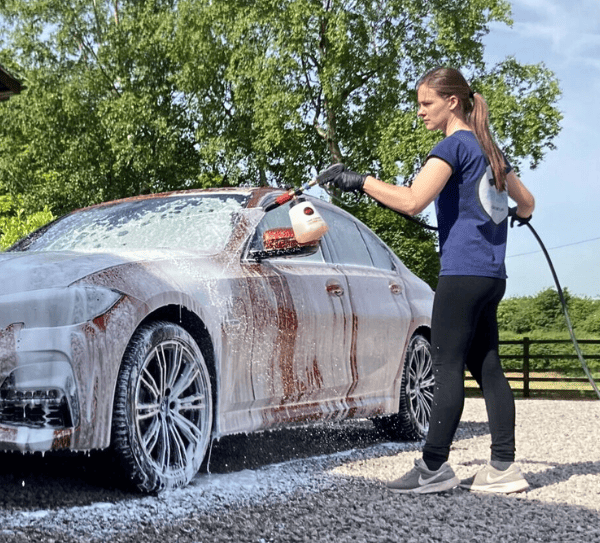Waxes and sealants are two super popular paint protection options for a car. But what is the difference between the two products, and which is the best option for you? In this article, I’ll be directly comparing waxes and sealants so you can decide which you should choose.
Car Wax vs Sealant
Car waxes contain natural components such as Carnauba or beeswax whereas sealants use synthetic components. Waxes add a warm glow to the paint, in contrast sealants leave a colder and harder looking finish. Sealants typically last around 2-3 times longer than waxes on the paintwork.
| Wax | Paint Sealant |
| Lasts 1-3 months on average | Lasts 3-12 months on average |
| Can be applied over other waxes/ sealants | Ideally need to be applied to bare paint |
| Provide a warm glow | Offer a cold, hard looking shine |
| Usually offer less protection | Typically offer more protection |
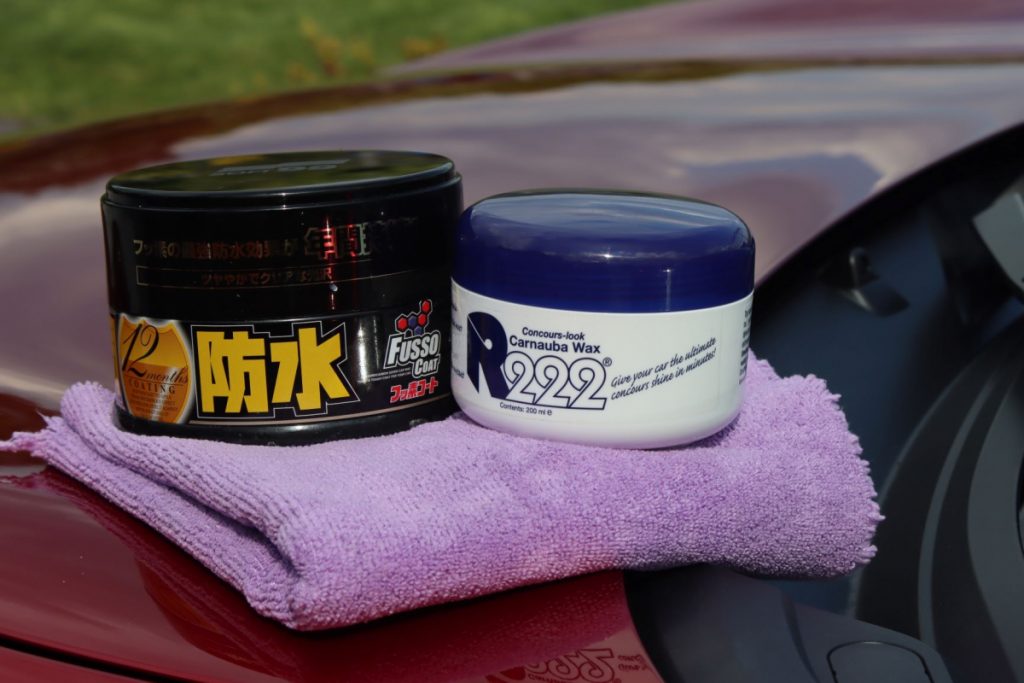
What is a Wax?
Car waxes contain natural Carnauba wax which comes from a palm tree native to Brazil. Waxes are well known for creating a warm glow to the paint, and usually last for around 1-3 months.
The confusion between paint sealants and waxes, has been created by a lot of detailing brands. You may have heard the term “synthetic wax”, which is basically a contradiction of the definition of a wax, since it doesn’t contain any natural elements.
Car waxes aren’t made entirely of Carnauba wax though, as this is rock solid in it’s raw form. When a wax says it “contains 100% Carnauba” it just means that the Carnauba mixed in the wax was in it’s pure form, not that the product is entirely Carnauba. Usually it’s somewhere between 5-30%.
So all car waxes will have synthetic components, but the fact that it contains this natural wax, is what typically defines it as a wax rather than a sealant. Some car waxes also contain other types of wax such as beeswax.
Waxes are very easy to use because they can be applied on top of sealants and other waxes, without massively impacting the durability.
Types of Wax
There are loads of different types of waxes which again, makes this topic a little bit confusing to a lot of new detailers. Here’s a quick summary of each:
- Paste wax: this is the most traditional form of car wax and will typically contain the highest percentage of Carnauba. It usually comes in a tub or tin and is in a solid state.
- Liquid wax: this usually comes in a bottle and can be applied to the car in liquid form. The percentage is Carnauba is typically less than paste waxes.
- Spray wax: this of course comes in a spray format and is usually much less durable than paste and liquid waxes.
You may have also heard of “hybrid waxes” and “ceramic waxes”. These tend to contain Carnauba along with synthetic components such as silicon dioxide which is designed to maximise the longevity of the wax.
Key Points
- Contain natural waxes such as Carnauba and beeswax.
- Leave a warm glow to the paint.
- Usually last 1-3 months.
- Can come in paste (solid), liquid and spray formats.
- Can be layered over other waxes and sealants.
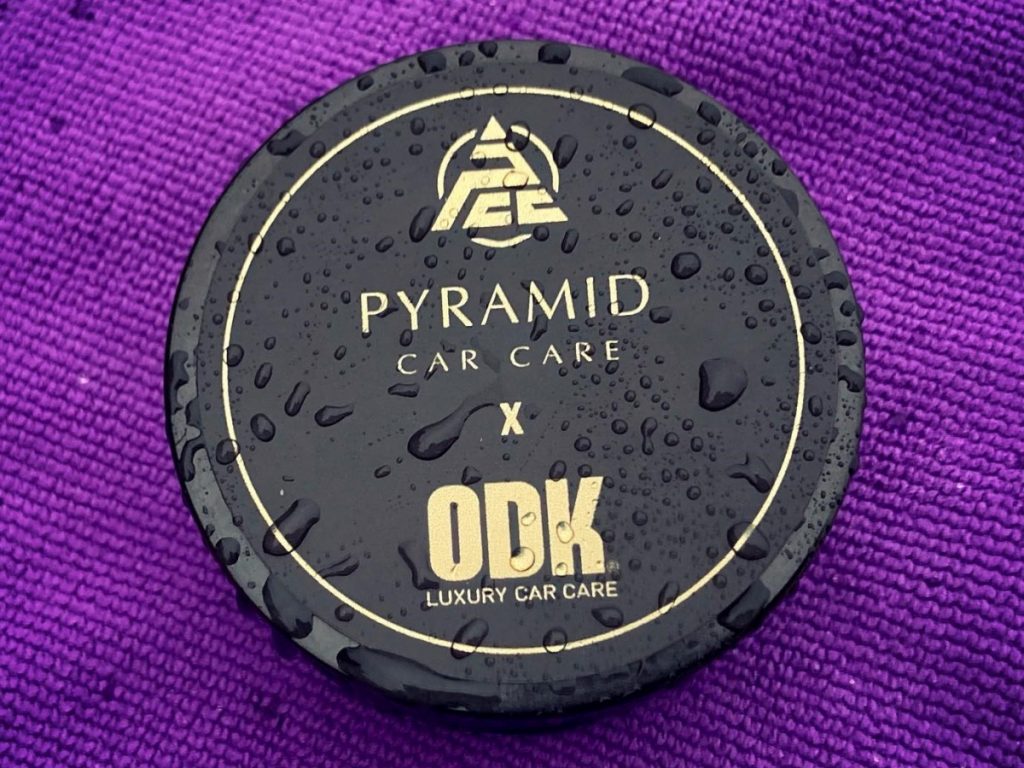
What is a Sealant?
Sealants are a synthetic form of paint protection, which do not contain any natural waxes. Sealants are well-known for creating a cold-hard looking shine, and usually last between 3-12 months on the paintwork.
Sealants represent the next generation of paint protection and followed on from waxes. They’re a more modern solution and typically offer better durability, slickness and overall protection.
Sealants are easy to apply, however they need a well-prepared surface to maximise the durability. This is because, unlike waxes, they ideally need to be applied to bare paint which is free from any other waxes and sealants.
Types of Sealants
- Paste sealants: some sealants can come in a solid form in a tub or tin. These can also be referred to as “synthetic waxes”.
- Liquid sealants: these come in a bottle and are applied to the car using a foam or microfiber applicator.
- Spray sealants: these are sprayed onto the car directly, or an applicator and spread over the surface.
- Spray and rinse sealants: these are applied to a wet car, and rinsed off immediately to leave a layer of protection in the quickest way possible.
Sometimes brands come out with “ceramic sealants”. These are just sealants infused with silicon dioxide which helps to improve the durability and water repellency.
Key Points
- A sealant is a synthetic form of paint protection.
- Produce a cold-hard looking shine.
- Sealants typically last between 3-12 months.
- Can come in paste format, but are usually in a spray or liquid format.
- Need to bond to the paintwork to maximise durability so it is not recommended to apply them over other waxes and sealants.
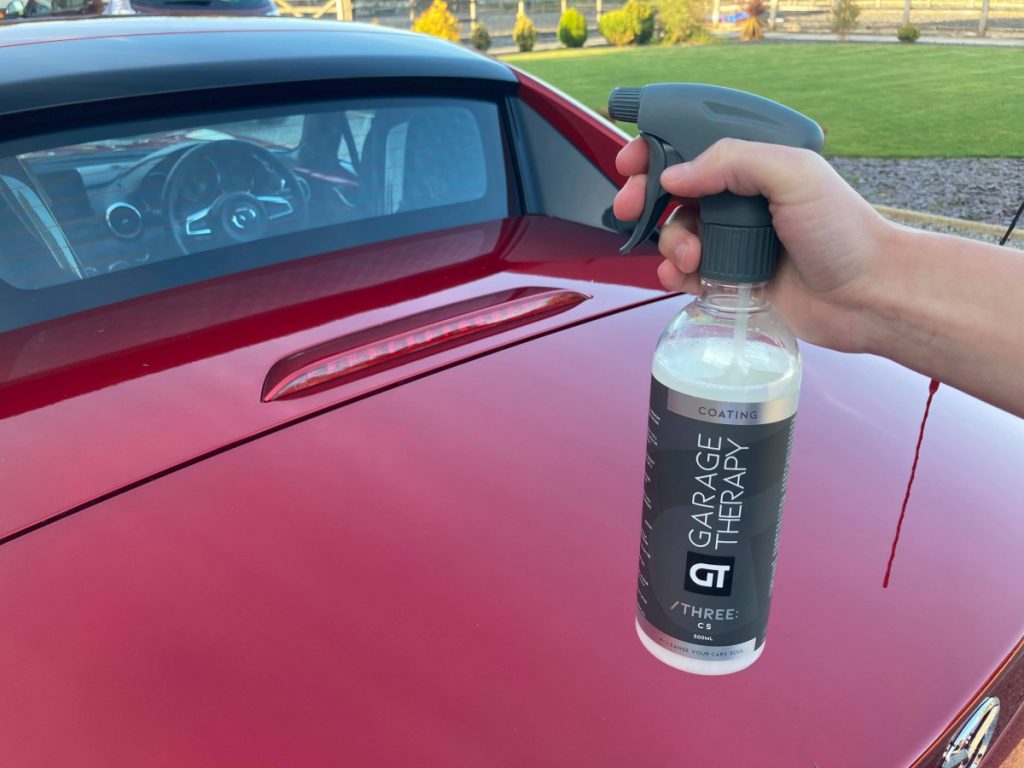
Waxes vs Sealants
Now that we’ve been through the basics, let’s dive into the direct comparisons. I’ll be going through each aspect in a bit of detail, but here’s a quick summary table too.
| Feature | Wax | Sealant |
| Durability | Approx. 1-3 months | Approx. 3-12 months |
| Preparation | Can be applied over other waxes or sealants | Ideally needs to be applied to bare paint |
| Gloss and finish | Warm glow | Colder shine |
Durability
Sealants typically last longer than waxes, however, the exact amount of time really does depend on the brand and product. Usually waxes last between 1-3 months and sealants last between 3-12 months. “Hybrid” and “ceramic” waxes, may last up to 6 months.
The durability also depends on how well the surface was prepared. Waxes are less fussy, and will generally last a similar amount of time when applied to bare paint, or on top of a sealant or another wax or glaze.
Sealants will have less longevity if layered on top of another product. So if a sealant claims to last 12 months, and you layer it over another sealant without properly removing it first, it could only last 3-4 months.
Winner: Sealant
Different types of waxes and sealants have different levels of durability. Check out my guide to how long waxes and sealants last to learn more about the topic with examples.
Protection Level and Water Repellency
In terms of shielding the car from the elements, sealants are marginally more effective. They bond to the paintwork more effectively and form a harder layer of protection in a lot of cases, which again accounts for their better durability.
However, it really does depend on the product in question. A “show wax” will be less protective than a durable liquid sealant, but there are exceptions to the rule here.
In terms of repelling water, waxes tend to be a bit more reactive when initially applied, but slightly worse than sealants after a couple of washes.
Winner: Sealant
Gloss and Shine
It’s hard to pick a winner in this category because it’s so subjective. Waxes are well known for producing a “warm glow” whilst sealants are known for producing a “cold shine”.
In reality, there’s not a huge difference between the two. And if you saw a car parked up, you’d be unlikely to be able to identify if it was covered in a wax or sealant.
It’s also true that waxes and sealants don’t make the world of difference when it comes to a car being shiny. The biggest impact, comes from the condition of the paint in terms of it being contaminant and swirl-mark free.
However, here are a couple of photos of my car coated with a wax or sealant. Again, the gloss levels will depend on exact product you’re using and the lighting also makes a big impact too!

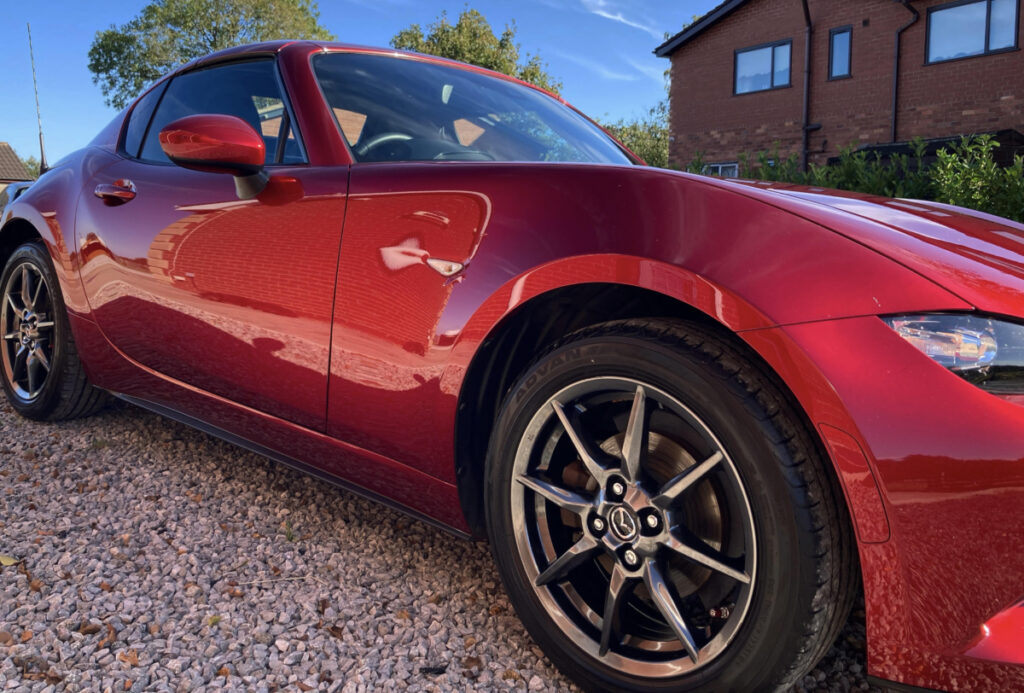
Winner: Draw
Ease of Application
Usually, the application process for waxes and sealants is pretty similar. Whether it’s in a paste, liquid or spray format, the rules are generally the same. You apply the product in a thin layer, wait for it to “haze” and then buff it off with a microfiber towel.
The only real difference between waxes and sealants, is in the preparation.
Sealants are a bit more fussy to apply because ideally the surface needs to be completely free from old waxes, sealants and contaminants to be able to let the product properly bond to the paintwork to get the best longevity.
Waxes on the other hand, still last a good amount of time when layered over another wax, sealant or a glaze. It will generally last longer if you apply it to bare paint, but the difference isn’t as significant as with a sealant.
You can apply a sealant over another sealant or wax, nothing terrible will happen. But expect the product not to live up to it’s durability claims.
Winner: Wax
Cost
Waxes and sealants usually cost the same amount. Paste formats of both types of products usually work out a bit more cost effective because you use very little product with each application. Spray waxes and sealants usually don’t last as long and more product is required, making them a less economical option.
The price depends on the product itself, and the brand. However, most waxes and sealants usually cost between $15-30.
Winner: Draw
Frequently Asked Questions
Don’t worry if you’ve still got a few more questions! In this next section, I’ll be answering some of the most frequently asked questions surrounding the wax vs sealant debate.
Can I use both a wax and a sealant?
You can use both a wax and sealant together. Apply the sealant underneath as this ideally needs to bond to bare paint and offers better durability, then apply the wax over the top. Give the sealant around 12 hours to cure before applying a wax over the top.
What is the best car wax?
It’s hard to choose the “best car wax” because I simply haven’t tried every single one. However, two of my favourites are P21S Carnauba Wax and Pyramid Car Care Ceramic Wax.
Check out my recommended products page to see more.
What is the best car sealant?
Again, it’s hard to answer this question without having tried every wax on the market, but one of my favourites is Garage Therapy /THREE: Ceramic Sealant. It offers excellent gloss levels and slickness and lasts around 4-5 months.
Check out my recommended products page to see more.
What are ceramic coatings?
Ceramic coatings are another form of paint protection and last around 2-5 years. They are more difficult to apply than waxes and sealants and require far more preparation.
Thanks for reading! I hope you’ve found this article helpful. Here are some other articles you might find useful.

